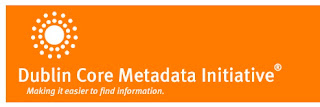Search Engine is a computer program to find answers to queries in a collection of information, which might be a library catalogue or a database but is most commonly the World Wide Web. A Web search engine produces a list of “pages”—computer files listed on the Web—that contain the terms in a query. Most search engines allow the user to join terms with and, or, and not to refine queries. They may also search specifically for images, videos, or news articles or for names of Web sites.
DEFINITION OF SEARCH ENGINE
Search engine is a program that searches for and identifies items in a database that correspond to keywords or characters specified by the user, used especially for finding particular sites on the Internet. It is a retrieval mechanism and performs the basic retrieval task. It accepts the query with each of the records in a database. Primary application is to provide access to the resources on the WWW (World Wide Web) and stored on many different services. A search engine is really a general class of programs; however, the term is often used to specifically describe systems like Google, Bing and Yahoo! Search that enable users to search for documents on the World Wide Web.
IMPORTANCE OF SEARCH ENGINE
Search engines are the foundation of the Internet. Most users will turn to a search engine as the quickest way of finding the information, or product that they want. Collecting right information or data is mostly impossible without using it. Major importance of search engine is given below:
1. The role of a search engine is to help a user find what they are looking for on the web.
2. Search engine provides access to a large and distributed document collection.
3. By using keywords and phrases, the search engine finds the most relevant results for the user that is what they are looking for.
4. Efficiency achieved by using metadata to represent websites.
5. Search engine solves user’s information need.
TYPES OF SEARCH ENGINE
Broadly categorized into three types of search engines:
A. Keyword or Basic Search Engine,
B. Directory Search Engine,
C. Meta Search Engine.
It will be described as follow:
A. KEYWORD OR BASIC SEARCH ENGINE
DEFINITION
Whenever you search for something using a search engine, you type keywords that tell the search engine what to search for. Which search engines have keyword base search interface are called keyword or basic search engine. This type of search engine use special robot program to copy back to main server and index. Keyword search engines have very simple search interface and these are more advance.
EXAMPLES
Google: http://www.google.com
BING: http://www.bing.com
AltaVista: http://www.altavista.com
Hottbot: http://www.hottbot.com
Lycos: http://www.lycos.com
ADVANTAGES
1. Simple one is easy to use.
2. Look for new and updated webpages.
3. Can achieve the best results by using less commonly used words.
DISADVANTAGES
1. One way nature link.
2. No knowledge of the link page itself.
B. DIRECTORY SEARCH ENGINES
DEFINITION
These are the selective Internet finding aids that are arranged by subject and include only selected sites. Many portals and search engines have a directory component or partner. Most directories have keyword searching, but entries are also listed under one or more hierarchical subject terms or categories. Directory search engines offer hierarchical of internet resource. This type of search engine organized by human effort according to some basic underlying principle.
EXAMPLES
Yahoo!: http://www.yahoo.com
Megellan!: http://www.megellan.com
Open Directory Project-ODP: http://www.dmoz.org
ADVANTAGES
1. Can be very useful for browsing information on a particular subject.
2. Useful in evaluating search results.
DISADVANTAGES
1. Major problems in connection with directory
2. Reliance on people to build and maintain their content.
C. META SEARCH ENGINE
DEFINITION
A Meta search engine is a search tool that sends user requests to several other search engines and/or databases and aggregates the results into a single list or displays them according to their source. It provides all in one tools search for works and phrases. This type of search engine Amalgamate results, remove duplicate entries and present a single listing.
EXAMPLES
Dogpile: http://www.dogpile.com
Metacrawler: http://www.metacrawler.com
Debriefing: http://www.debriefing.com
ADVANTAGES
1. Quick way searcher across several search tools.
2. The searcher can be sure to have incorporated a range of approaches in seeking the information what they require from internet.
DISADVANTAGES
1. May not support some of the more sophisticated search facilities.
2. Need additional time taken to problem a search as opposed to using just a single search engine.
A GOOD SEARCH ENGINE CHARACTERISTIC
1. Coverage of the database
2. Search facilities and process
3. Result list
4. Version of search tools
An awareness of strengths and weakness of the different search engine is important in searching the internet for resources. If an information organization is designing a website, it is important to be aware of the search engines that users may use in accessing that website. In fine having so many advantage and disadvantages all search engines are important for searching information.
REFERENCES: S.M. Zabed Ahmed, Dept. of Information Science and Library Management, University of Dhaka
WEBOPEDIA
ENCYCLOPAEDIA BRITTANICA
NetXtra
SEARCH ENGINE SHOWDOWN












